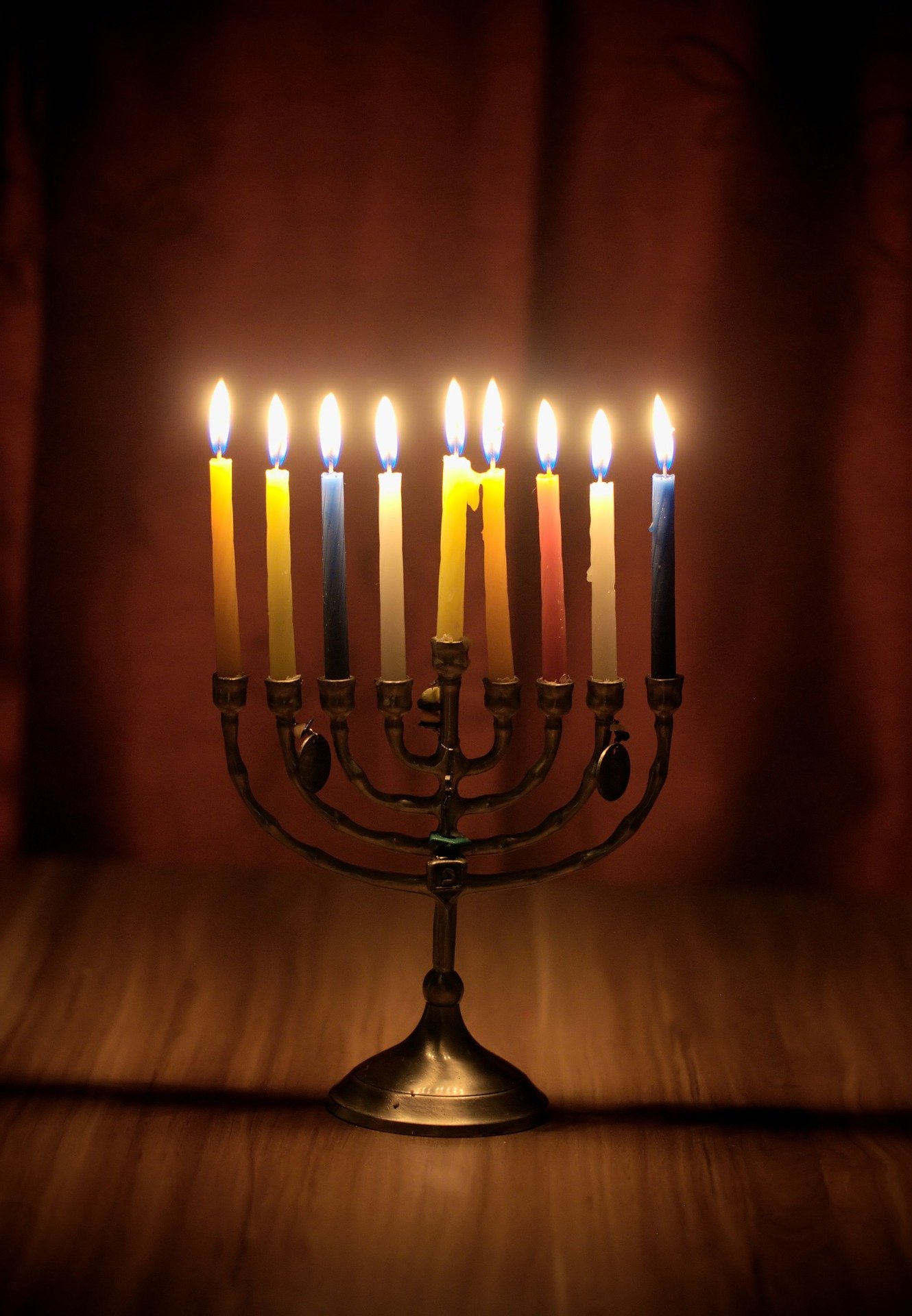
8 Lessons for Hanukkah, Useful All Year
Ten hanukkahs ago, when I was about four and my brother nine, my parents decided that it was time to make giving tzedakah a family project, and not just something they did on their own. They coupled this idea with another—their wish to take some of the consumerist curse off December—and instituted the following ritual. Here is the ceremony as we do it, including eight Hanukkah lessons I’ve learned from it.
Around October, my parents and brother and I begin throwing all of the tzedakah appeals that arrive in the mail into one big basket. By December it’s stuffed. Hanukkah Lesson #1: It is amazing how many organizations need money.
A week or so before Hanukkah begins, we all sit down and sort through the envelopes, tossing out the ones that none of us really cares about. For each one that is left (maybe 20 or 25)— and any other tzedakahs we like thrown in, too—we make an index card. (As a compulsive family, we excel at activities that involve lining up cards in little rows on a table. I tend to get carried away arranging the cards alphabetically, categorically, and by the date of the appeal, but this really isn’t a necessary part of the process.)
Next, one person describes whatever organizations the others don’t know much about. This year, for example, my brother has been very involved with an orphanage in Delhi, India, so he spoke quite eloquently on behalf of his index card, waving it in the air and pressing it to his chest. Hanukkah Lesson #2: Speak out for what you believe in. We do this because we soon vote on the tzedakahs we want to give to, and because “it’s important,” as my father says every year, “to be educated voters, and to make educated decisions.” This is Hanukkah Lesson #3.
Then we each vote for eight charities—one per scrap of paper—putting our ballots into my late grandfather’s old hat, as is our custom, with the goal of dedicating every night of Hanukkah to a different tzedakah. Hanukkah Lesson #4: When you do something nice as a family, include your ancestors.
At this point my mother is known to invoke Ethics of the Fathers 2:21—“It is not up to us to complete the work, yet neither are we free to desist from It.” That’s Hanukkah Lesson #5. She says, “It’s human nature for us to fix nothing because we can’t fix everything. There are many worthy charities that are going to bite the dust in our little election here, and that feels bad, which is good.” It is her style as a rabbi to say something that leaves you thinking, “Huh?”
When we tally up the votes— paying particular attention to my father’s handwriting, because he has a history of stuffing ballot boxes—we generally end up with a lot of ties, maybe 15 charities altogether, with most clustered into categories—for example: the environment, women’s issues, Jewish issues, and causes promoting racial and economic justice.
Here’s where the debating and horse-trading begins, much of it aimed at knocking out some organizations that will only weaken the chances of others. (For example, if Planned Parenthood and NARAL are both in there, they’ll probably both lose in the final vote.) This year my father went head-to-head for Common Cause, my mother nearly drew blood for Zero Population Growth, and I argued for a fund to free Custer the elephant—a case met with scorn. Hanukkah Lesson #6: Go for it. You never know.
My mother and I tend to prefer local organizations over national ones (the local women ‘s shelter, the local soup kitchen); I lean towards literacy programs and anything involving cute animals. We vote again, and again and again, until we’re finally down to eight. Then we reflect bitterly on what everybody else did wrong during the politically corrupted process, and enjoy a moment or two of mourning for the good causes that died, and shouldn’t have, on the kitchen table.
Hanukkah Lesson #7: If not now, when? Nobody is allowed to leave the table until eight checks are written out—this year we gave $100 to each cause—and they’re put in stamped, addressed envelopes which we then hang in our “Hanukkah Room”—the living room festooned with blue-foil dreydl decorations and every lopsided construction-paper latke and menorah that my brother and I ever created.
Then comes Hanukkah. On each night, before lighting the candles, we pluck one envelope off the holiday decor, say a sentence about why that particular charity matters, and dedicate that evening’s candles to it. One of us must then be cajoled into running outside in the cold to actually put the envelope in the mailbox. The rule is that no one can light candles until the evening has been consecrated by the sound of the mailbox lid clunking. Hanukkah Lesson #8: It feels good to give charity when you’re sitting in front of your not-yet-opened presents.
Anna Schnur-Fishman is a 9th grader at the Boston Latin School.

